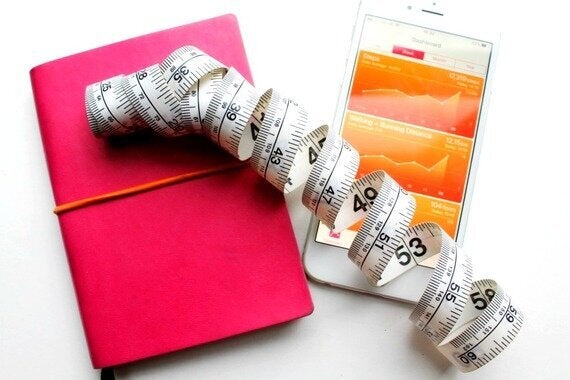
Whenever anyone embarks on a new journey in life they throw themselves into it head first, full of motivation and nervous excitement, with a mind to succeed. The problem is, we often find that these feelings start to fade as we feel our goals are being pushed further and further away.
This is especially the case when it comes to health and fitness, whether we want to lose weight, hit a new PB, gain confidence or increased energy. That's why it's important to continuously set short term and long term goals, and more importantly to make sure we keep track of our progress.
You may feel that climbing Mount Everest is more of a reality than losing those last few pounds, or that your dreams of getting that first pull up are a distant memory (Yes, I'm speaking from experience here!), but you may actually be closer than you think.
So how should you be tracking your progress:
Weigh yourself - I thought this should go first as it's probably the most obvious thing to anyone losing weight (although it's probably not the most accurate way to chart progress!). If you are keen to weigh yourself make sure that each time you weigh yourself you always use the same set of scales, always do it at the same time of day and team it with tip number 2 - if you're using weights as part of your plan it's likely that the scales will go up rather than down, but don't fear as muscle weighs more than fat!
Measure yourself - It may seem odd but you could potentially be putting on weight, whilst simultaneously losing inches. Make sure you measure as many areas as you can and keep a note of your measurements so you have something to compare them to in future. I personally like to measure biceps, chest, waist, hips & thighs.
How your clothes fit - To me this is the best way to track progress and the way that makes you feel best about yourself. When your clothes start to feel more comfortable before eventually falling off altogether. The best part about it? You get to go clothes shopping duh! (and don't forget to keep a pair of your old jeans for that Biggest Loser reveal!)
Body fat percentage - This can be taken on a set of specialised scales or with a pair of callipers which you can buy easily online. Though I do recommend you have it done by a professional as they will have the best kit, so next time you're at the gym ask if someone can do it for you - if you regularly have a PT they should do it during your consultation and then follow up on a regular basis.
Take pictures - Before and after pictures can be enlightening. Mirrors can differ and you may not notice slight changes yourself, however, putting two pictures side by side will often show your progress no matter how small. And, although it may be a bit daunting I highly suggest showing your friends or posting on your social media account. We can be hyper critical of ourselves, often overlooking our successes - and we all get a buzz out of a like or two!
Track your workouts - Remember, it's not always about what size you are but your actual progress on the gym floor that makes a huge difference to how you look and feel. Buy yourself a journal or print off a chart from the internet and jot down all of your workouts. From your 5km run time to your 3 rep max back squat; your max set push up to your 1 rep max deadlift.
Use Apps -The fitness app world is going off at the moment and there are plenty of ways to track progress. Track your food & weightloss journey in My Fitness Pal, your runs in Map my Run, your daily steps on the iphone health app or even your Oly lifting technique on the Iron Path app.
How do you measure your health and fitness goals?